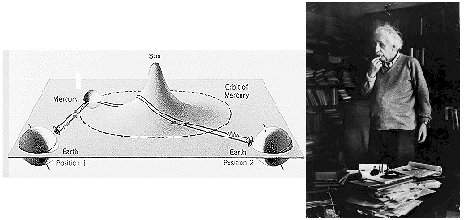


Untill the
last few years, these was intended mainly to understand further
aspects of quantum field theory in a curved background.
Then black holes went to capture me (and many others), with the
classical theory till to arrive at issues
involving the quantum theory, in some of its very fundamental
aspects. The link below will
bring you to my lectures on black holes, as a (hopefully) useful
introduction to the subject.
The black holes ask physicists a lot of questions:
Lectures
|
where A is the area of the surface known as the event
horizon, as measured in units of Planck's area (each around 10^66
cm^2, the square of the Planck's length). So, a solar mass black hole
roughly has (100000000000000000000000000000000000000)^2 degrees of
freedom per square centimeter of the horizon, much larger than that of the
matter that collapsed to form the black hole. This is why we think there must
be a large contribution of gravitational entropy, even if we dont know
exactly what this means.
Of course, even such large numbers can be obtained in QFT. What is
hard to obtain in precise form, is the area law, that entropy scales
with area rather than spatial volume. Moreover, the entropy formula for large masses
typically is a quadratic function of the mass, so the density of states increases
as fast as EXP(cM*M). This is by far faster than the density of states of any known
matter configuration. For example, the greatest entropy in a given volume and for a given temperature,
is that of black body radiation, which increases with the power ¾ of the energy.
The known class of theories which may have such a large densidy of states are 2D conformal
field theories, of which the string is a well known realization. So the idea is that the
collective coordinates of the horizon are quantum fields, to be governed by a 2D conformal
field theory.
This is what i'm working out. Let me explain some line of thought in this direction.